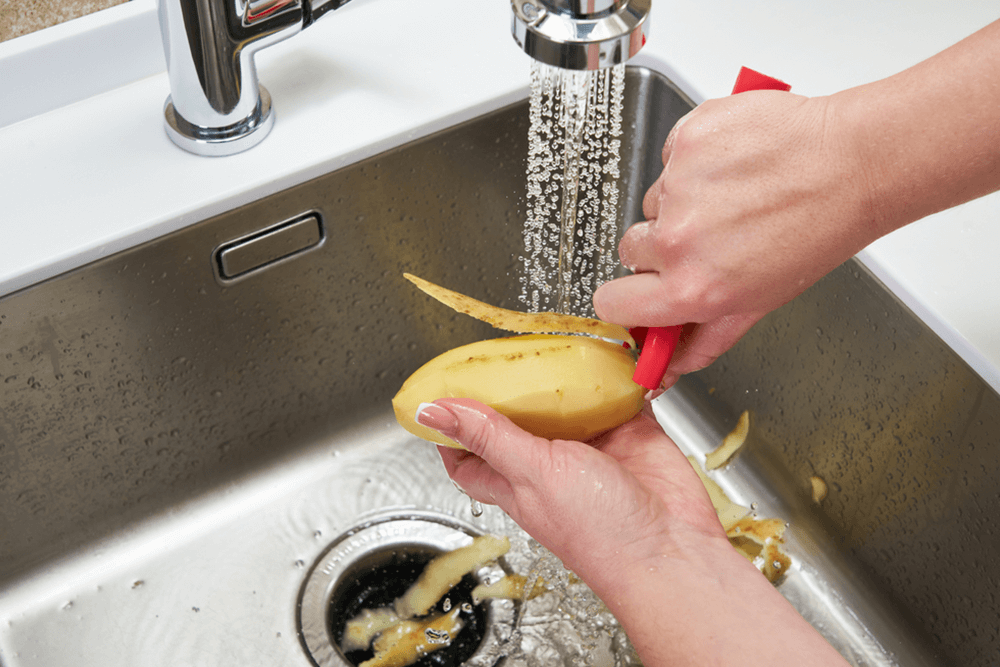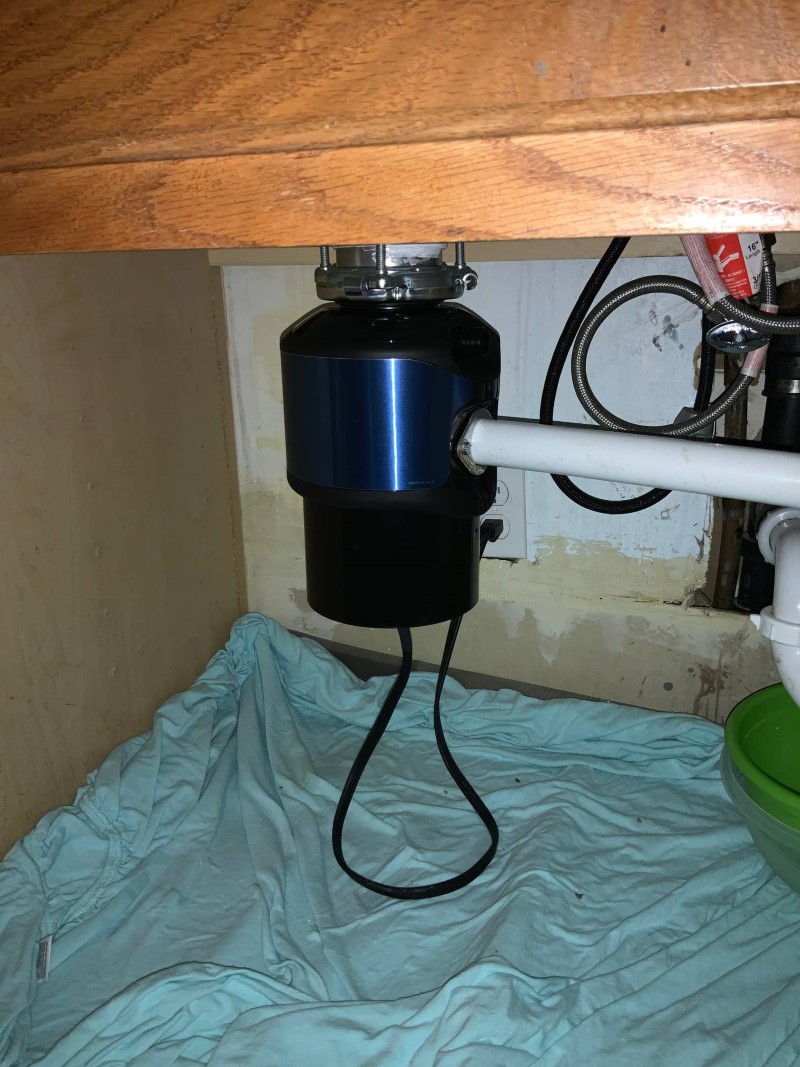Highly-Rated Methods for Resolving a Leak in Your Garbage Disposal
Highly-Rated Methods for Resolving a Leak in Your Garbage Disposal
Blog Article
On this page below you might get a lot of good insight all about Tips on Fixing a Leaking Garbage Disposal.

Garbage disposals are crucial kitchen area home appliances that help in taking care of food waste effectively. However, a leaking waste disposal unit can be a frustrating and messy trouble to take care of. The good news is, several leaks can be repaired conveniently with a few straightforward actions. In this write-up, we will discuss how to deal with a dripping garbage disposal efficiently.
Intro
Garbage disposals are installed under kitchen sinks and are designed to shred food waste into smaller pieces, allowing it to travel through the pipes system easily. While these devices are normally dependable, leakages can happen in time due to wear and tear, loose connections, or damages to the unit.
Step-by-Step Overview to Taking Care Of a Leaking Garbage Disposal
Turn Off the Power
Before attempting any repairs, guarantee that the power to the waste disposal unit system is switched off to avoid the risk of electrical shock.
Locate the Leakage
Recognize the precise area of the leakage and establish the cause
Tighten Links
Use a wrench to tighten up any kind of loosened links in between the disposal device and the pipes system.
Replace Seals or Gaskets
If the leakage is due to worn seals or gaskets, remove the old parts and change them with brand-new ones.
Patching Fractures or Holes
For splits or holes in the disposal device, use epoxy or an ideal patching product to seal the damaged area.
Identifying the Resource of the Leak
Before trying to deal with a leaking garbage disposal, it is essential to determine the source of the leakage. This can generally be done via aesthetic assessment or by performing straightforward examinations.
Visual Inspection
Inspect the garbage disposal unit meticulously for any kind of signs of water leakage. Pay very close attention to areas around seals, gaskets, and link points.
Checking for Leaks
One means to test for leakages is by running water via the disposal system and checking for any type of noticeable signs of leak.
Common Causes of Leakages in Garbage Disposals
Worn Seals and Gaskets
Seals and gaskets play an essential function in preventing water from leaking out of the garbage disposal. Over time, these components can weaken, bring about leakages around the disposal device.
Loose Connections
The links between the waste disposal unit and the plumbing system can come to be loose with time, causing water to leakage out during operation.
Splits or Openings in the Disposal Unit
Physical damage to the garbage disposal, such as cracks or holes in the real estate, can likewise result in leakages.
Devices and Materials Needed for Dealing With a Dripping Waste Disposal Unit
Before beginning the fixing process, gather the necessary devices and products, consisting of a screwdriver, adjustable wrench, plumbing technician's putty, replacement seals or gaskets, and epoxy or patching material for repairing fractures or holes.
Testing the Waste Disposal Unit After Repair
When the repair is full, check the garbage disposal by running water with it to make sure that the leakage has been settled.
Preventive Maintenance Tips to Avoid Future Leaks
To avoid future leaks, it is vital to perform regular upkeep on your garbage disposal. This includes keeping it tidy, staying clear of placing non-food things or hard items down the disposal, and periodically looking for leaks or other concerns.
Final thought
To conclude, dealing with a leaking waste disposal unit is a relatively simple procedure that can be finished with standard tools and materials. By adhering to the steps laid out in this post and practicing preventive upkeep, you can keep your garbage disposal in good working condition and avoid costly repair work in the future.
What to Do About a Leaking Garbage Disposal
A leaking garbage disposal often goes unnoticed until you confront a sopping cabinet, a foul-smelling puddle, or an audible drip-drip-drip from the unit. The fix can be frustrating, too, because the leak can stem from a number of components in the system. Fortunately, with a little sleuthing, you can zero in on the leak and—depending on the exact location—stop the icky oozing and repair the component that caused it. Worst case scenario, if it turns out that the garbage disposal must be replaced, installing a new one is a reasonable do-it-yourself task for those with basic plumbing skills. Read on to keep the cash you’d otherwise hand over to a pro.
Prepare to find the leak
Prior to testing the garbage disposal for leaks, unplug it at the wall outlet and turn off the power from the breaker box to prevent electrical shock. Then insert a watertight sink stopper into your sink drain and wipe the unit dry with a clean cloth. In any handy container, mix a few drops of food coloring into a few cups of water, and pour the dyed water onto the sink stopper to help you locate the leak.
Investigate the source
the top, where the disposal meets the sink drain the side, where the dishwasher hose or main drain pipe connects to the disposal or the bottom of the unit Inspect each of these locations while gliding a light-colored rag over the unit; the dyed water will readily show on the rag and reveal the location of the leak. If a leak isn’t immediately apparent, remove the sink stopper and pour a few more cups of dyed water down the sink drain, then check for leaks again. Leaks near the top of the unit are more likely to show themselves while the sink is plugged, while side and bottom leaks are more noticeable while the sink is unplugged.
The metal sink flange that sits directly inside the sink drain is typically sealed around the top with plumber’s putty (a clay-like sealant) and then secured from under the sink with bolts. If the plumber’s putty deteriorates, or the bolts loosen, the flange can no longer form a watertight seal between the sink drain and the disposal—which could cause a leak at the top of the unit.
To reseal the leaky flange, you must first detach the garbage disposal. Start by loosening the screws securing the main drain pipe to the disposal, then loosen the screws in the metal clamp securing the dishwasher hose to the disposal and detach the drain pipe and dishwasher hose from the disposal. Loosen the screws in the mounting ring that connects the disposal to the metal mounting assembly beneath the sink, then pull down the disposal and carefully set it on a clean, dry surface. Loosen the bolts in the mounting assembly with a wrench, then pull down the mounting assembly and set it near the disposal.

Do you enjoy reading up on Why Is ? Give a remark down below. We will be delighted to see your insights about this review. Hoping that you visit us again later on. Enjoyed our blog entry? Please share it. Let other people discover it. Thank-you for your time spent reading it.
Request Service Report this page